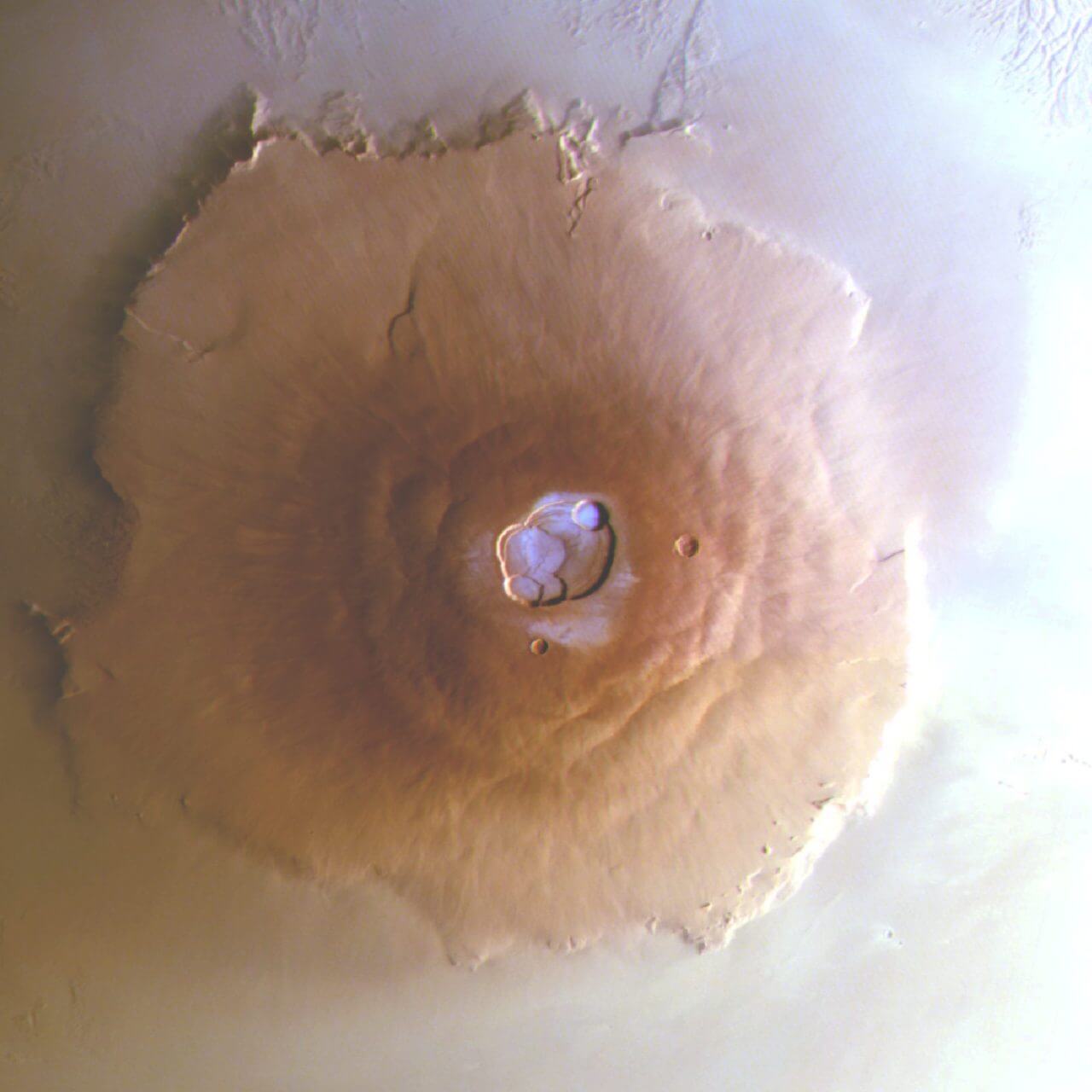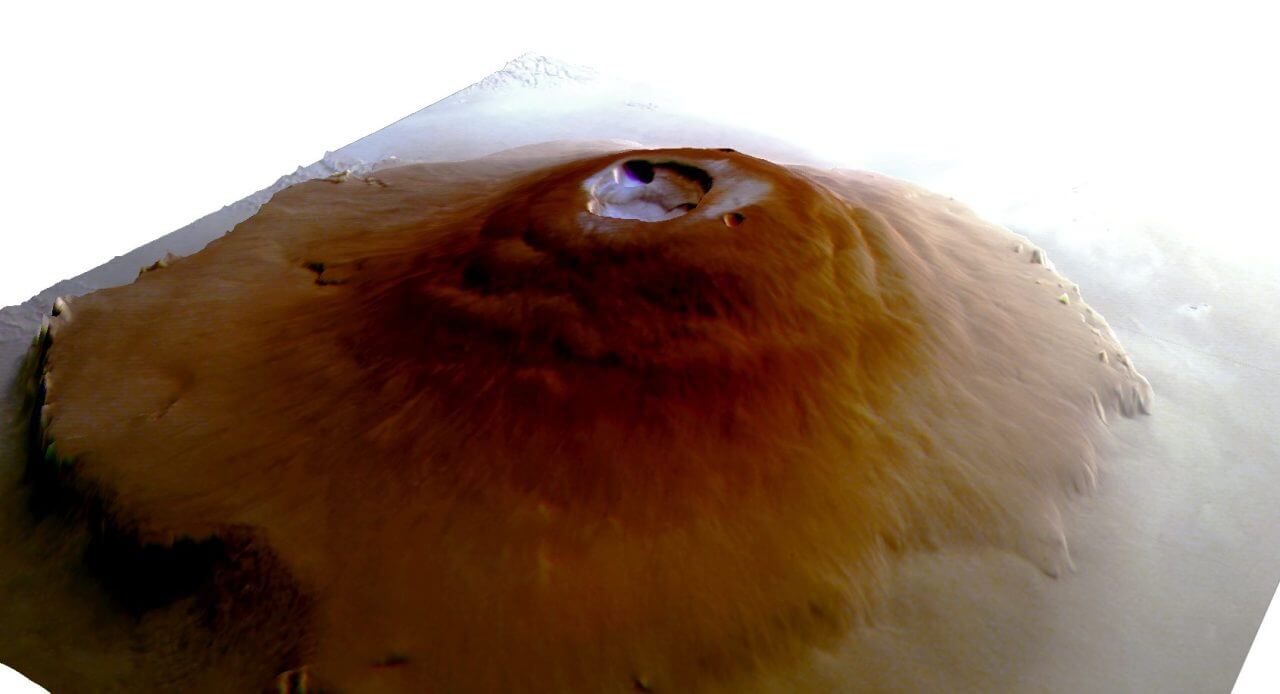This is an image of Olympus Mons, the largest volcano on Mars, with a diameter of about 610 km and a height of 21 km above sea level, taken from orbit around Mars. According to the European Space Agency (ESA), it is the water frost that makes the interior and surrounding areas of the mountain's massive caldera appear white. When we hear the phrase “white-topped mountain,” it's a familiar sight to those of us who live in Japan, but water frost has been discovered on Mount Olympus, located near the Martian equator, which was thought to be frost – free according to the European Space Agency, and this is the time. The first.

The discovery was reported by a research team led by Adomas Valantinas, a former doctoral student at the University of Bern (currently a postdoctoral researcher at Brown University). The CaSSIS color surface imaging system was installed on the Trace Gas Orbtiter (TGO) Mars rover of the ESA-led ExoMars mission that arrived at Mars in 2016. Valentinas, who was analyzing the high-resolution images Since 2018 for a mountain we have discovered bluish deposits shown in the image.
The first image was taken on November 30, 2022, five days after the CaSSIS image, using the High Resolution Stereo Camera (HRSC) aboard ESA's Mars Express rover in the morning (7:20 local time). ). The research team analyzed observational data from CaSSIS, HRSC, and TGO's NOMAD spectrograph, and discovered that the Tharsis region includes Mount Olympus, Arsia Mons, Ascarios Mons, and Ceronios Tholos, leading to the discovery of water frost on the summit of the volcano. In this research, more than 30,000 images were ultimately analysed, starting with the first image in which frost was detected.


Although the thickness of the frost is only 1/100 of a millimeter (10 micrometres), it covers a wide area, and the amount of water circulating between the Earth and the atmosphere is approximately 150,000 tons per day, creating approximately 60 Olympic swims. It is estimated to be equivalent to 10 minutes.
According to Valentinas, frost is unlikely to exist near the Martian equator because the combined effect of the thin atmosphere and daytime sunlight keeps temperatures relatively high on both low-lying surfaces and mountaintops. However, the reason frost forms on the mountain is believed to be climate-induced
In addition, frost in the Tharsis Mountains is only present for a few hours before and after sunrise during the cold season, and disappears as the sun rises, so the seasons and times when it can be observed are limited. In addition to these timing conditions, Valentinas points out that many Mars rovers are in sun-synchronous orbits, and unlike TGO and Mars Express, which can observe all day long including early morning on Earth, they can only be observed in The ability to make observations as a reason why frost has not been found yet.
An image of Mount Olympus taken by ExoMars' HRSC was released by the European Space Agency on June 10, 2024.
source
- European Space Agency – Cryogenic volcanoes discovered in the tropical regions of Mars
- Brown University In an important first, researchers discovered water frost on the tallest volcanoes in the solar system
- Valentinas et al. – Evidence of the presence of transient morning frost deposits on the Tharsis volcanoes on Mars (Natural Earth Sciences)
Editorial/Editing/Suray Department

“Travel maven. Beer expert. Subtly charming alcohol fan. Internet junkie. Avid bacon scholar.”






More Stories
The ranking of the best survival horror games selected by the IGN US editorial team has been released! Resident Evil RE:2 ranked first
Enjoy a hot cigarette while looking at whales and tropical fish under the sea ⁉︎ “Ploom Dive” is an amazing spatial video experience using Apple Vision Pro
Apple Watch now supports sleep apnea, watchOS 11 released – Impress Watch